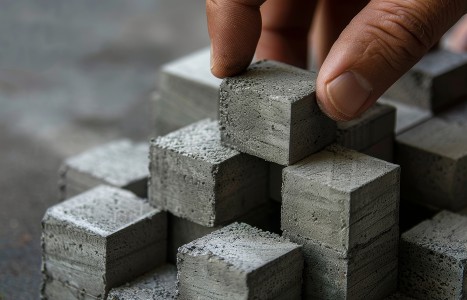Because traditional Chinese medicine (TCM) views the human body as an interconnected network of energy (qi) and seeks to restore balance and harmony, ensuring the smooth flow of qi and blood is crucial to nourish and regulate the reproductive system. TCM treatment aims to regulate menstruation, reduce anovulatory menstruation, help ovulation, improve egg quality, stabilize progesterone, and provide a good endometrium environment for successful implantation and pregnancy.
Keeping Dancers on Their Feet
Many dancers from diverse styles such as traditional ballet, jazz, modern and hip-hop, start training as early as the age of 3. They tend to put their bodies through biomechanical stress, excessive compression, lack of rest, irregular nutrition, overexertion and overindulgence in greasy or sweet food, as well as excessive alcohol consumption and smoking. This accumulates and progresses over the years into chronic conditions that surface more during the dancers' prime, when auditions and shows are their occupation. The discipline and competitive drive promotes an environment of muscular overuse caused by rigorous dance classes, rehearsals and performances.
These individuals are athletes and have a unique mindset. Due to the nature of this industry, dancers who do seek treatment are not really interested in prescribed rest. Their schedules are usually maintained year round, with only brief stints of rest. Even then, they are usually taking more classes.
Injuries to the lower lumbar typically include underlying problems that stem from overuse, creating tight muscles that are unable to lengthen. This causes biomechanical compensations and fatigue. Abdominal weakness creates a muscular imbalance with the posterior muscles of the hamstrings and gluteals. This reduces the effectiveness of the hip flexors, which increases lordosis, anterior pelvic rotation and iliopsoas tightness. The compensation factors cause the gluteals to fire, which further decreases hip flexion. A compensatory tightening causes a posterior pull of the shortened erector spinae muscles in the thoracic region. Lumbar flexion is then decreased, creating myofascial pain by triggering the perivascular intramuscular nociceptors. Other factors that also need to be taken into consideration are the lack of hydration, not eating nutritious food or taking vitamins, along with challenging choreography repeated to perfection, often to the detriment of the dancers' bodies. This environment also discourages dancers from disclosing injuries until they are severe.
These compensation muscle patterns can be due to fatigue and/or lack of strength between the muscles of the hip-joint flexors, extensors, internal/external rotators, and abdominal and lumbar regions. In many cases, dancers will have problems due to sacroiliac and iliolumbosacral (SI) instability. In these particular conditions, the dancers will have pain and point tenderness in the gluteal, SI and lower lumbar areas. Although the pain does not usually radiate past the knee, it does shift from side to side. Commonly there is muscle weakness associated with the gluteus medius/maximus, hip adductors and hamstrings.
Compensation patterns include iliopsoas tightness (shortening), which is unilateral and mostly associated with the dominate balance leg. Myofascial trigger points are typically present in the gluteus medius and maximus, as well as the piriformis.
Treating Dancers with Cupping
Cupping can be used to treat various injuries, including low back pain. Of course, some choreographers do not like the marks that are left behind, but a little makeup can do wonders. Nevertheless, the dancers get results. Cupping is great for tight muscles. TCM diagnostic methods are very effective with blood stagnation, wind and damp.
Examples of typical cupping points that are used for this condition are: UB 20, UB 23, UB 37, D 3, D 4 and, of course, ah shi points. Additional acupuncture points include ST 36, SP 6, K 3, LV 3, SP 10 and SJ 5. SP 9 is used to treat the underlying conditions of spleen qi deficiency, liver qi stagnation, kidney qi deficiency, blood deficiency and damp accumulation. Again, this is based upon individual TCM diagnostic methods, not protocol trigger-point and/or segmental acupuncture methods.
Here are four cupping methods that involve leaving cups on the body for five to 15 minutes, depending on the patient's constitution and condition. Paying attention to the seasons is important as well - the time should be decreased during the summer.
- Flash Cupping: Used mainly for deficient or weak patients. Can also be used for acute contusions. Cups are applied and removed several times.
- Sliding or Moving Cups: Used for blood and/or qi stagnation. One cup or multiple cups can be used.
- Acupuncture-Needle Cupping: Used for bi syndromes or chronic pain. Cup is placed over the needle and retained there for 10 minutes. Cups can be placed locally/distally around the affected region, depending upon inflammation and pain.
- Cupping With Bloodletting: Used for pain or blood stasis/stagnation. Two different methods are used. In the first, prick area that has stagnation, then place cups over it. In the second, cup area first (approximately 30 seconds), lance area a number of times, then reapply the cup.
Avoid the contraindicated points and abdominal/sacral area during pregnancy. Also, don't use cupping if the patient has any of the following: thin muscles, convulsions, a high fever, cardiovascular disease, aneurysms, anemia, skin abnormalities or organs that have inflammation. Caution patients that after taking a hot shower/bath, and/or exercising, the marks will be more severe.
Success in preventing and treating low back pain in dancers is based upon understanding anatomy, biomechanics, physiology, neurology, immunology and sports medicine. Another component of treatment success is to be familiar with the workings of the entertainment industry. It is important to understand that each dancer is different and TCM treatment strategies constantly vary. It is also important to note that many chiropractors, physical therapists, medical doctors and massage therapists try to create a protocol to use on everyone with certain signs/symptoms. Creating a standard treatment is not effective because it is not specific to the individual dancer's condition. A full understanding of the Eastern philosophy behind the medical specialty of cupping could certainly improve a dancer's performance.
The integration of both Eastern and Western philosophies can have a profoundly positive impact on a dancer. The key is being not only educated in both Eastern/Western academic diagnostic medical philosophies, but also in the dancer's occupation, the dance company and its sports-medicine team. This gives a well-integrated, working knowledge of what is expected.
Enabling communication, knowledge, and understanding of individual treatment strategies will create a win-win environment for all involved. Most importantly, the dancer will truly have quality of care on an integrated level rather than a purely reactive, sign/symptom-based protocol.
Resources
- Arnheim D. Prentice W. Principles of Athletic Training. St. Louis: Mosby Year Book, 1993.
- Mellion B. Sports Injuries and Athletic Problems. Philadelphia: Hanley and Belfus Inc., 1988.
- Baechle TR, Earle RW. Essentials of Strength Training and Conditioning. Champaign, Ill., Human Kinetics, 1994.
- Zhang E, Ed. Basic Theory of Traditional Chinese Medicine. Shanghai: Shanghai College of Traditional Chinese Medicine, 1990.
- Powers S, Howley ET. Exercise Physiology. New York: McGraw-Hill, 1997.
- Prentice WE. Rehabilitation Techniques in Sports Medicine, 3rd ed. New York: WB Saunders, 1999.
- Prentice WE. Therapeutic Modalities in Sports Medicine, 4th ed. New York: WB Saunders, 1999.
- Webb G. Sports Injuries: Diagnosis and Management. New York: WB Saunders, 1990.


